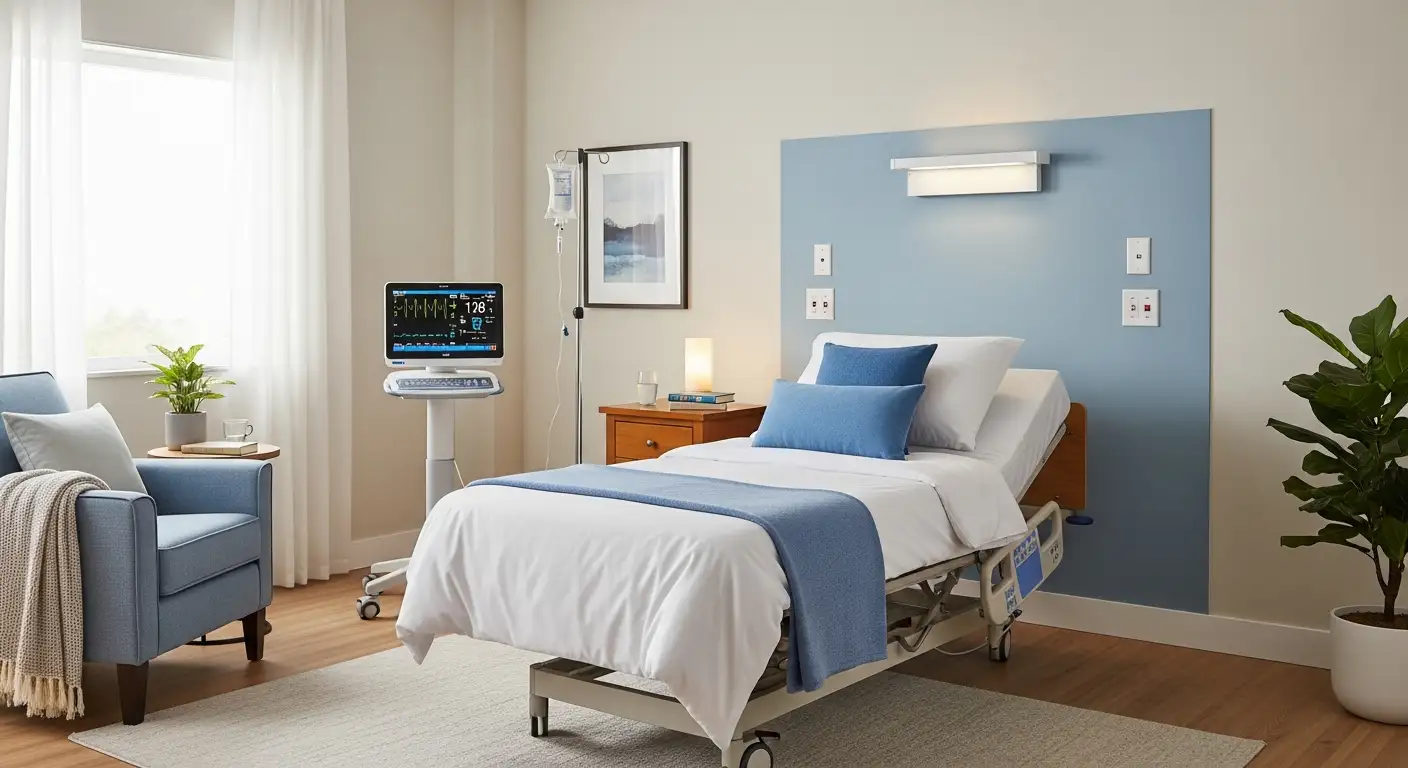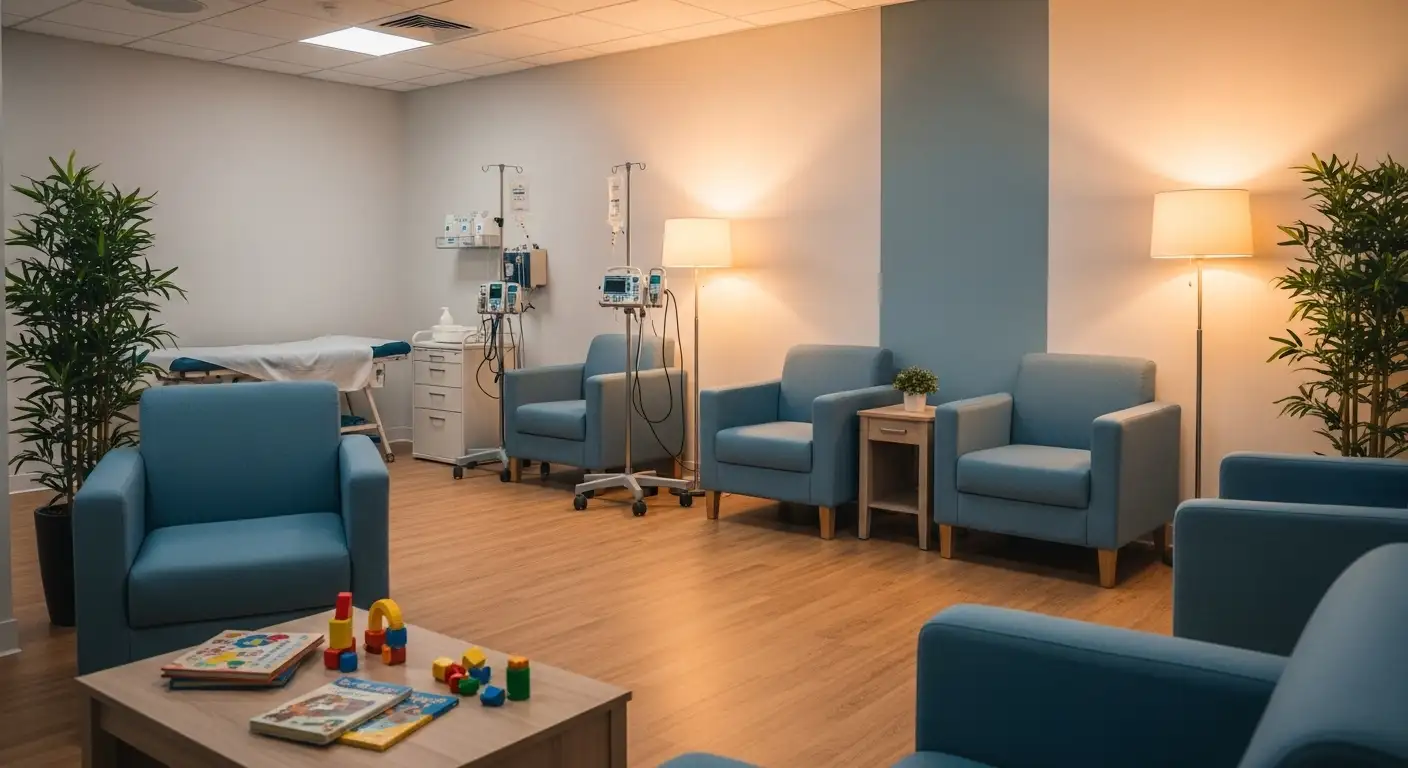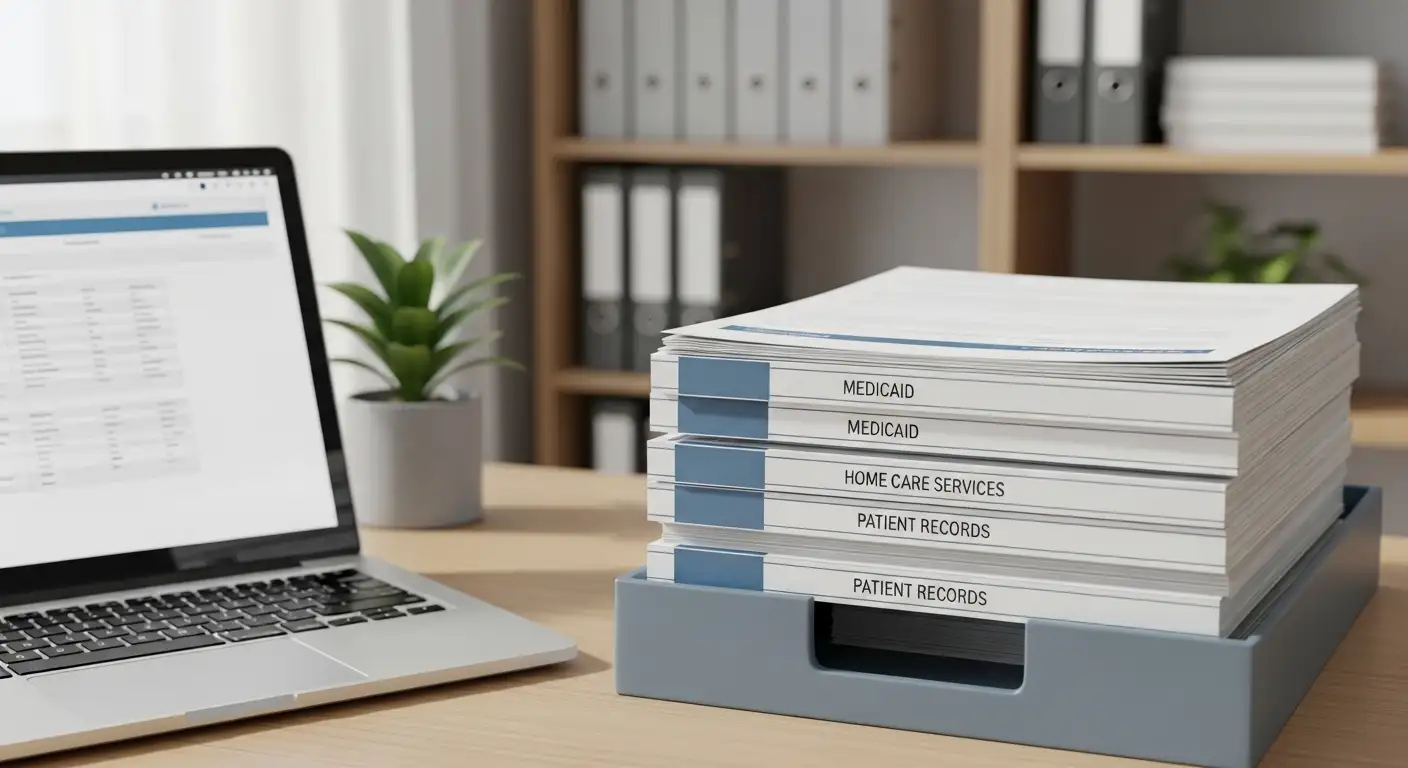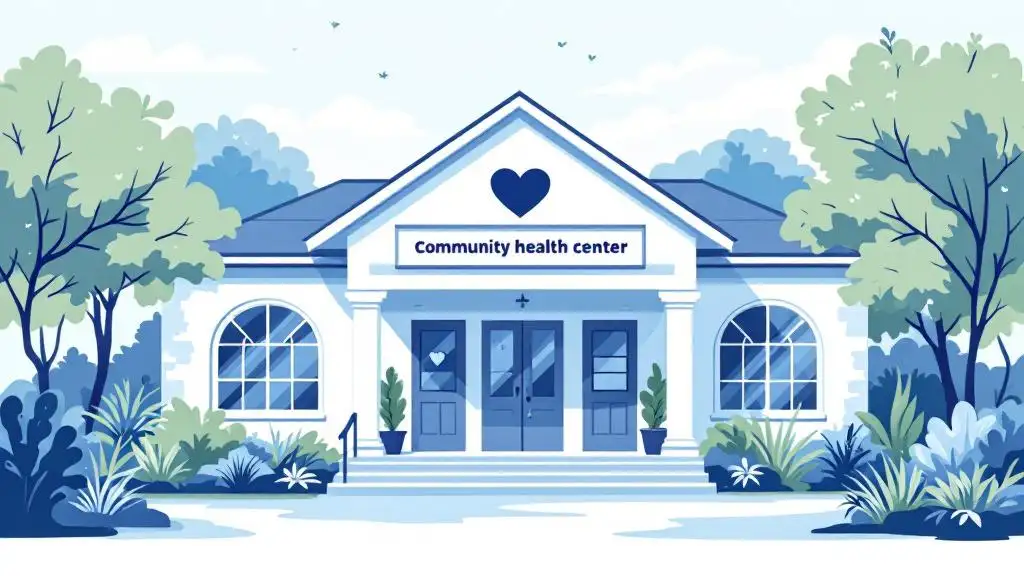How Skilled Nursing Ensures Continuity Across Multiple Providers
Coordinated Care at Home: The Vital Role of Skilled Nursing in Chronic Disease Management

Bridging Care Across Providers
Navigating the complexities of chronic illnesses requires a seamless coordination between various healthcare providers and home health services. Skilled nursing plays a pivotal role in ensuring continuity of care by integrating medical management, personalized plans, and caregiver collaboration, ultimately enhancing patient outcomes and quality of life.
Understanding Individual Health Conditions for Effective Care Coordination
Why is understanding patients' individual health conditions important in care coordination?
Understanding patients' individual health conditions, especially chronic illnesses such as diabetes, heart disease, chronic obstructive pulmonary disease (COPD), and Alzheimer's disease, is fundamental to effective care coordination. These chronic conditions often require specialized management approaches, and knowing the particular health challenges a patient faces allows healthcare providers to tailor care plans that meet those unique needs.
Chronic illnesses not only impact the patient's physical health but also influence their daily living activities and mental well-being. For instance, diabetes care involves constant blood sugar monitoring and medication adjustments, while Alzheimer’s requires attention to cognitive function and safety needs. Recognizing these factors ensures that interventions are timely and appropriate.
Effective care coordination based on a thorough understanding of such conditions enables teams to anticipate potential complications, adjust treatments proactively, and integrate services such as therapy and home health support. This leads to better health outcomes, reduces hospitalizations, and enhances the patient’s quality of life.
Building a Multidisciplinary Care Team for Comprehensive Management
What is the value of a multidisciplinary care team in managing patients with multiple conditions?
Managing patients with multiple chronic conditions like diabetes, heart disease, COPD, and Alzheimer's requires a well-coordinated approach. A multidisciplinary care team, which includes primary care providers, specialists, therapists, and home health aides, plays a vital role in delivering comprehensive care tailored to individual needs.
Primary care providers oversee the overall health management and coordinate referrals to specialists who address specific conditions. Therapists contribute by focusing on physical, occupational, or speech therapy needs, helping to maintain or improve functionality. Home health aides offer essential daily support, assisting with personal care and monitoring health status within the home environment.
This collaborative team approach ensures that all health aspects—from medication management to rehabilitation and daily living assistance—are addressed efficiently. Regular communication and shared care plans enable the team to adapt care strategies as patient needs evolve, resulting in smoother transitions between services and preventing care gaps.
By combining diverse expertise, multidisciplinary teams can better manage complex health challenges, reduce hospitalizations, and improve patient outcomes and quality of life. This team collaboration creates a trusted network around the patient, enhancing safety, independence, and emotional well-being throughout ongoing care.
Creating and Updating Personalized Care Plans

How Personalized Care Plans Contribute to Continuity of Care
Personalized care plans play a vital role in maintaining continuity of care for patients with multiple chronic conditions. By including detailed medication management, individualized health goals, and customized daily routines, these plans ensure that care is precisely tailored to each patient’s unique situation.
Developing Personalized Care Plans
Creating a care plan begins with a comprehensive assessment of the patient’s health status, chronic illnesses, and functional abilities. Collaboration among primary care providers, specialists, therapists, and home health aides allows for a multidisciplinary approach. This team designs a blueprint that addresses medical needs and aligns with the patient's lifestyle and preferences.
Medication Management
A critical component of the care plan is managing medications safely and effectively. Tools such as blister packs, digital reminders, and detailed medication lists help prevent errors and harmful drug interactions. Regular review of medications by healthcare professionals ensures adjustments can be made in response to the patient’s evolving health.
Setting Health Goals and Daily Routines
Health goals focus on improving quality of life, safety, and independence. They might include managing blood sugar levels for diabetes or maintaining mobility in COPD patients. Daily routines are structured to support these objectives, incorporating therapies, nutrition, and rest.
Adapting Care Plans to Changing Needs
Patients’ conditions often fluctuate, necessitating ongoing updates to care plans. Regular communication among the care team and caregivers facilitates timely revisions. This flexibility promotes better outcomes by enabling interventions that adapt seamlessly to new challenges or improvements.
Maintaining personalized care plans thus sustains the continuity and quality of care, addressing the complex and dynamic needs of patients over time.
In-Home Health Services as Backbone of Chronic Condition Support
What role do in-home health services play in managing multiple chronic conditions?
In-home health services are vital for supporting individuals managing multiple chronic conditions such as diabetes, heart disease, COPD, and Alzheimer's. These services include personal care to assist with daily living activities, skilled nursing for clinical care needs, and therapy services like physical and speech therapy. Such comprehensive support helps patients maintain their health and independence in a familiar environment.
Personal care aides assist with routine tasks, allowing patients to stay safely at home while skilled nurses oversee medication management and monitor complex health issues. Therapies provided at home help improve mobility and communication, which can otherwise deteriorate with chronic illness.
Receiving care in the home setting offers significant benefits. It reduces the risk of hospital stays and exposure to infections, provides comfort and emotional well-being, and supports tailored care that adapts to evolving health needs. This approach facilitates a better quality of life by integrating health management seamlessly into daily routines.
By enabling patients to remain in their homes, in-home health services provide critical, personalized care that supports chronic disease management and fosters greater autonomy and safety for individuals with complex health conditions.
Medication Management Strategies to Prevent Errors
What tools help with medication management?
Medication management is a cornerstone of effective care coordination for patients with multiple chronic conditions. Tools such as blister packs organize medications by day and time, making it easier for patients and caregivers to administer the correct doses. Digital reminders, including smartphone apps and alert systems, prompt timely medication intake, reducing the risk of missed doses.
Why are comprehensive medication lists important?
Maintaining an up-to-date, comprehensive medication list is vital. It includes all prescribed drugs, over-the-counter medications, and supplements. This list facilitates communication among healthcare providers, preventing duplicate or conflicting prescriptions.
How do these strategies prevent harmful interactions?
By using these tools and maintaining clear records, caregivers can effectively monitor and manage drug interactions. This reduces the risk of adverse effects that can arise when various medications react negatively with each other.
How does medication management contribute to care continuity?
Careful medication management using tools like blister packs, digital reminders, and detailed medication lists helps prevent harmful drug interactions and errors, which is essential to maintaining health stability and continuity across multiple providers and settings. This consistency supports better patient outcomes and reduces hospitalizations associated with medication mishaps.
Developing Emergency Plans for Patient Safety
What are the components of emergency plans in skilled nursing care?
Emergency plans in skilled nursing care should include well-organized medical information, key contacts, and preferred healthcare facilities. This comprehensive approach ensures that during an emergency, caregivers and healthcare providers can quickly access vital data like medical history, current medications, allergies, and treatment preferences.
How is medical information organized in emergency plans?
Medical data should be compiled clearly and updated regularly. Comprehensive lists covering diagnoses, medications, recent treatments, and specific care instructions help reduce delays and errors when urgent decisions are needed.
Why is including contact and hospital preferences important?
Having immediate access to emergency contacts such as family members, primary care providers, and specialists strengthens communication. Including preferred hospitals or healthcare facilities guides first responders and hospital staff to respect the patient's accustomed care settings and protocols.
Why are emergency plans crucial during crises?
Emergency plans prepare both caregivers and patients for prompt and appropriate responses, reducing confusion and potential harm. By consolidating essential information, they promote safety, continuity of care, and help avert complications during sudden health episodes.
Additional Strategies for Emergency Preparedness
- Regularly review and update plans to reflect changes in health status.
- Use digital tools to share emergency information with the entire care team.
- Educate patients and families on emergency procedures.
By prioritizing detailed and accessible emergency plans, skilled nursing care providers can enhance patient safety and optimize outcomes during critical situations.
Communication: The Cornerstone of Consistent Care
How does communication among caregivers support continuity of care?
Regular communication among caregivers and healthcare team members plays a vital role in maintaining consistency in care delivery. When all parties involved—primary care providers, specialists, therapists, home health aides, and family caregivers—stay informed about any changes in a patient's condition or treatment plan, they can adapt their approaches promptly and effectively.
Channels and frequency
Effective communication often involves multiple channels such as phone calls, in-person meetings, shared electronic health records, and caregiver communication apps. Utilizing digital tools like shared calendars and medication reminders ensures timely updates and reduces the chance of errors.
The frequency of communication may vary depending on the patient's health status; however, regular check-ins—daily or weekly—are common in managing complex chronic conditions.
Impact on care quality and consistency
Consistent communication fosters a trusted, multidisciplinary care team environment. This collaboration improves medication management, helps coordinate in-home services, and supports emergency preparedness. It also enables swift responses to new health developments or emergencies, enhancing patient safety.
Moreover, research shows that open communication enhances caregivers' ability to provide personalized and adaptive care. This continuity not only leads to better health outcomes but also supports patients' emotional well-being and independence at home.
Leveraging Technology to Enhance Care Coordination

In what ways does technology improve coordination among multiple care providers?
Technology plays a vital role in strengthening coordination among healthcare teams managing patients with multiple chronic conditions. Tools like shared calendars allow team members to schedule and track appointments, therapy sessions, and medication administration efficiently, ensuring everyone stays informed and aligned.
Caregiver communication apps enable real-time updates and messaging between primary providers, specialists, home health aides, therapists, and family caregivers. This feature helps reduce misinformation or delays in sharing patient status changes or care instructions.
Medication reminders and digital alert systems help patients adhere to complex medication regimens, preventing missed doses or dangerous interactions. These technologies complement traditional methods such as blister packs and comprehensive medication lists.
By facilitating timely information sharing and task management, these technological solutions reduce errors and improve the seamless coordination required to provide high-quality, personalized care in home settings.
Examples of Technology Applications in Home Care
| Technology Tool | Purpose | Benefit |
|---|---|---|
| Shared Calendars | Scheduling care activities | Ensures synchronized appointments and treatment plans |
| Caregiver Communication Apps | Messaging and updates among team members | Enhances collaboration and immediate information flow |
| Medication Reminders | Alerts for medication timings | Improves adherence and safety in medication management |
Integrating these tools into home care routines supports a multidisciplinary care team in adapting to the patient's changing needs, ultimately elevating the quality and safety of long-term management.
Benefits of Medicare, Medicaid, and Community Programs in Supporting Home Care
How do government and community programs support home health care continuity?
Government programs like Medicare and Medicaid, along with various community initiatives, play a crucial role in backing home health care continuity. These programs provide essential coverage options that help patients access necessary medical and supportive services without undue financial burden.
Beyond coverage, these programs offer support services such as transportation to medical appointments and meal delivery, which are vital for patients with limited mobility or complex health needs. By addressing transportation challenges, patients are more likely to attend appointments and adhere to their care plans.
Home modifications, funded or subsidized by these programs, improve safety and independence within the home environment. Examples include installing grab bars, ramps, or wheelchair-accessible features, which decrease the risk of falls and support daily functioning.
This comprehensive assistance enhances access to care and quality of life, ensuring patients can maintain prescribed treatment regimens while living safely and comfortably at home. Such support fosters consistency and trust in care delivery, ultimately leading to better health outcomes and improved psychosocial well-being.
Prioritizing Quality of Life Alongside Medical Management
Why is focusing on quality of life important in skilled nursing care?
Focusing on quality of life aspects such as safety, independence, and emotional well-being ensures that care addresses not only medical needs but also the holistic needs of patients. This approach improves patient satisfaction and leads to better overall health outcomes.
Balancing Medical Needs with Safety and Independence
While managing chronic conditions and medical care is essential, prioritizing a patient's safety and independence helps them maintain control over their daily lives. Skilled nursing care that supports mobility, fall prevention, and daily routines can reduce hospitalizations and promote functional stability.
Emotional Well-being as a Core Component of Care
Emotional health profoundly impacts recovery and quality of life. Incorporating supportive relationships, mental health resources, and compassionate communication within the care plan enhances clients’ emotional well-being, reducing symptoms of depression and anxiety.
A Holistic Care Approach
Holistic care that integrates medical management with psychosocial support respects the whole person. It encourages therapeutic relationships between patients and caregivers, fostering trust and continuity in care which are crucial for long-term success.
By focusing on these non-medical factors alongside clinical treatment, skilled nursing care not only manages illness but also enriches lives, resulting in more positive experiences and improved outcomes for patients.
The Essential Role of Home Care Workers in Supporting Elderly and Disabled Clients
Functions of Home Care Workers
Home care workers play a vital role in supporting elderly and individuals with functional impairments by assisting with personal care tasks such as bathing, dressing, and meal preparation. Their presence in clients' homes helps maintain independence and daily living activities.
Support for Functional Impairments
These workers offer critical assistance tailored to clients' specific functional limitations, including mobility challenges and cognitive difficulties. This support helps reduce risks like falls and promotes better daily functioning.
Integration with Clinical Teams
Home care workers often act as a bridge between clients and their broader healthcare providers. Their ongoing presence enables consistent communication and reporting on clients’ conditions, which is crucial for coordinated multidisciplinary care.
Medicaid-Funded Program Roles
Many home care workers operate within Medicaid-funded programs, providing essential coverage and services to eligible clients. These programs aim to enhance access to care and improve health outcomes for vulnerable populations.
What role do home care workers play in ensuring continuity?
Home care workers ensure continuity by delivering consistent, day-to-day support and maintaining stable, trusting relationships with clients. By doing so, they not only meet personal care needs reliably but also facilitate collaboration with healthcare teams, which strengthens the overall care coordination process.
Continuity of Home Care Workers and Improved Client Outcomes

Why Is Having Consistent Caregivers Important?
Consistency in home care workers means that the same individuals provide care over time. This continuity promotes familiarity and trust between clients and caregivers. When home care workers know a client's preferences, needs, and routines intimately, they can provide more personalized and attentive care.
How Does Caregiver Continuity Link to Health and Well-being?
Research shows that clients who experience continuity with their home care workers tend to have notably better health outcomes. For example:
- Fewer Falls: Familiar caregivers are better equipped to anticipate risks and help clients navigate their environments safely.
- Functional Stability or Improvement: Continuous care supports maintaining clients' abilities in daily tasks, preventing decline.
- Reduced Depressive Symptoms: Stronger relationships with caregivers help alleviate feelings of isolation and support emotional well-being.
Developing Therapeutic Relationships Through Continuity
Maintaining consistent caregiving relationships fosters deeper trust between clients and home care workers. This trust enhances communication and enables caregivers to respond proactively to changes in clients’ conditions. Such therapeutic relationships are a cornerstone of effective and compassionate long-term care.
Together, these factors illustrate how continuity in home care staffing is not just a logistical advantage but a vital component in improving health outcomes and quality of life for clients receiving in-home care.
Challenges to Maintaining Continuity in the Home Care Workforce
What are the challenges to maintaining continuity among home care workers?
Maintaining continuity among home care workers faces several significant obstacles. One major challenge is the high turnover rate within the home care workforce. Many workers leave their positions frequently, which disrupts the stable relationships necessary for quality care.
Scheduling complexities also play a critical role. Coordinating care schedules becomes increasingly complicated, particularly for clients who need a high number of care hours. This complexity makes it hard to ensure the same caregiver consistently supports a client.
These challenges are especially impactful for clients with high care needs. When care is fragmented due to changing caregivers, it can lead to poorer health outcomes and decreased functional stability. Clients often experience interruptions in care routines and weakened trust with caregivers when continuity isn't maintained.
Overall, high turnover and scheduling challenges lead to inconsistent care delivery. Addressing these issues is essential to improve stability and continuity in home care, which benefits both clients and care providers.
Influence of Patient Demographics on Care Worker Continuity
How do patient characteristics affect home care worker continuity?
Home care worker continuity, referring to the consistency of having the same caregiver over time, can vary significantly based on patient demographics and health status. Several factors influence this continuity, including the client's age, race or ethnicity, and cognitive or functional impairments.
Older clients tend to experience lower continuity with their home care workers. This may be linked to more complex care needs or challenges in scheduling consistent care. Similarly, individuals who are cognitively impaired often see less consistency in their caregiving personnel, which can affect the development of trust and the quality of care received.
Race and ethnicity also play a role. Data indicate that clients who identify as Asian, Pacific Islander, or Native American often experience lower continuity compared to other groups. This disparity suggests potential systemic or resource barriers that impact stable caregiver assignments in these communities.
Moreover, male clients have been noted to face similar reductions in continuity. Functional impairments further influence this issue, as clients requiring increased care hours may experience more workforce turnover and scheduling difficulties.
Understanding these disparities is critical for developing targeted strategies to improve care relationships. Supporting continuity can foster stronger therapeutic bonds, enhance safety, and improve overall outcomes for vulnerable populations.
Efforts to reduce turnover and promote caregiver stability in diverse and high-need patient groups remain essential components of quality long-term home care.
Building Trust and Therapeutic Relationships Through Continuity
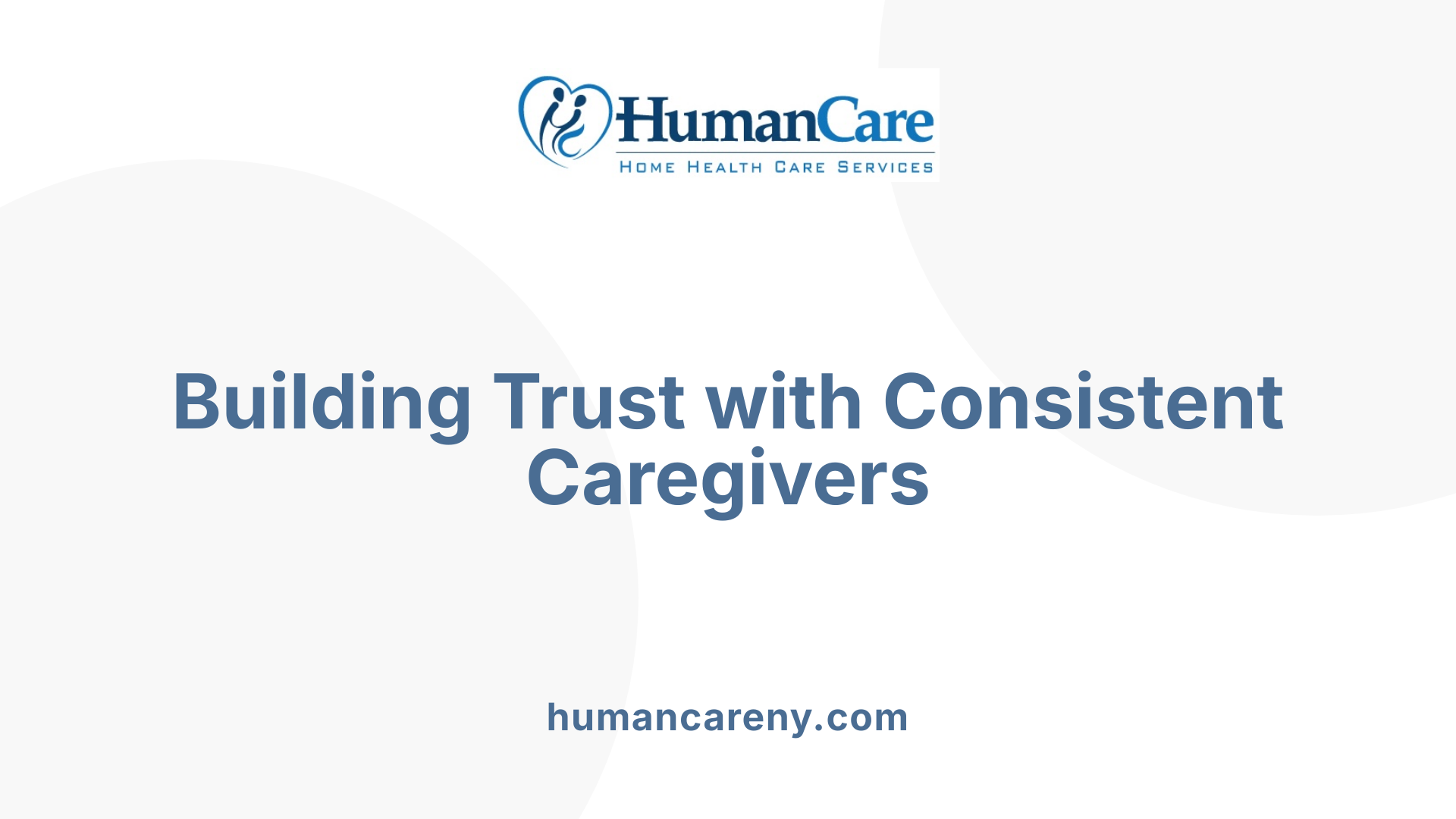
Why is trust important in the relationship between home care workers and clients?
Trust forms the foundation of effective caregiving in home care settings. When clients receive consistent care from the same home care workers over time, they develop a sense of security and comfort. This trust nurtures strong therapeutic relationships that are essential for engaging clients in their care plans and supporting their emotional well-being.
Psychosocial benefits of consistent caregiving
Consistent caregiving fosters emotional bonds that reduce feelings of loneliness and depression among clients. When home care workers are familiar with clients' unique needs and preferences, they can provide more personalized and compassionate support. This continuity enhances clients' psychosocial health by encouraging active participation in daily activities and health management.
Impact on mental health and engagement
Regular interactions with trusted caregivers help clients feel valued and understood, leading to improved mental health outcomes. This engagement encourages better adherence to treatment regimens and increases motivation for self-care. Clients who experience stable caregiving relationships often report greater satisfaction and overall quality of life.
Long-term care quality improvement
Maintaining high continuity in caregiving is linked to fewer falls, improved functional stability, and reduced depressive symptoms among clients. These positive health outcomes contribute to higher-quality long-term care by minimizing hospitalizations and enhancing clients’ independence and safety at home.
Strategies to Support Stability and Continuity in Home Care
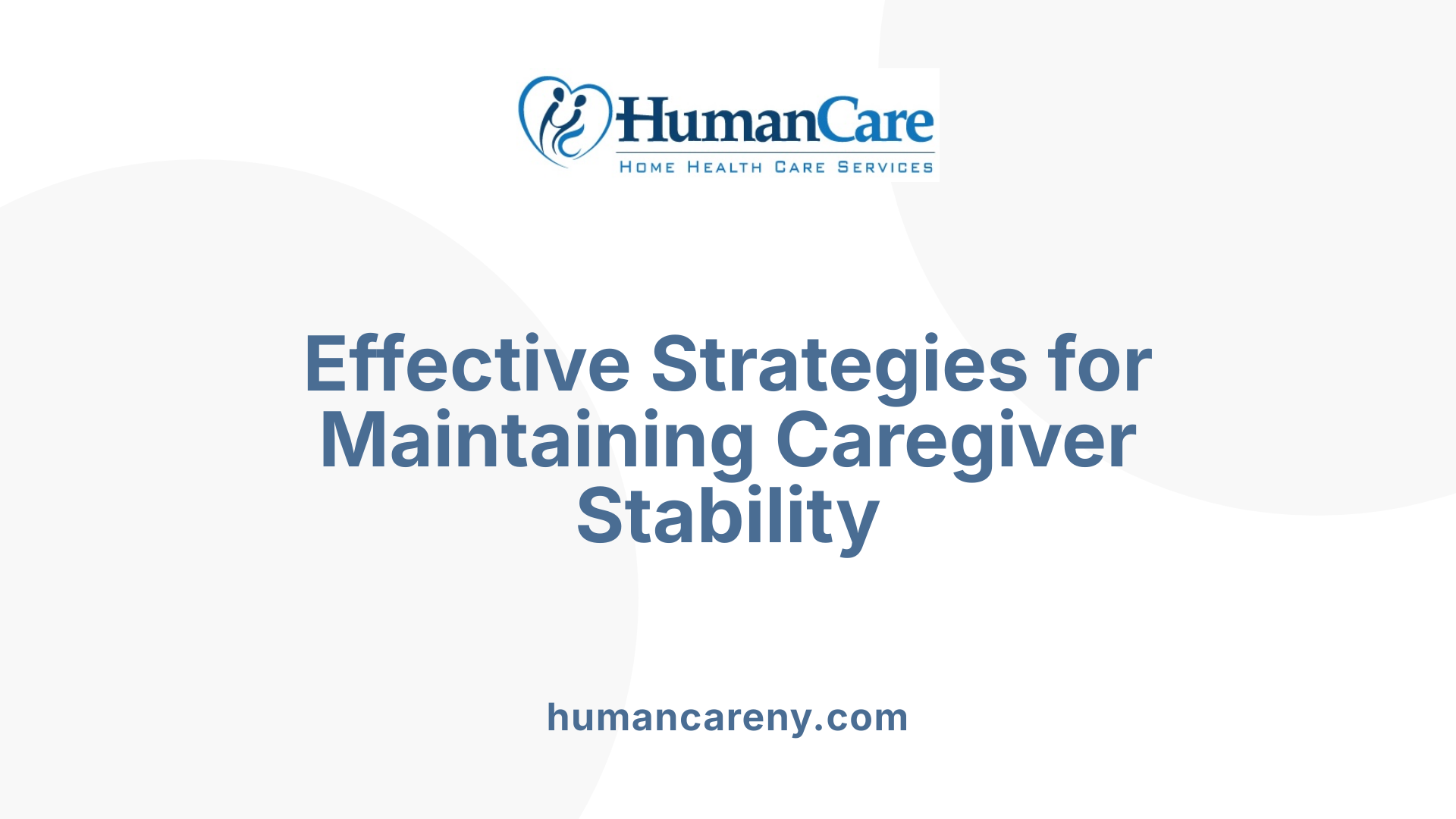
What strategies improve stability and continuity among home care workers?
Maintaining stability and continuity among home care workers is essential for delivering consistent, high-quality care. One effective strategy is enhancing workforce support through improved scheduling systems. By adopting innovative scheduling approaches, such as flexible shifts and better coordination tools, providers can reduce turnover and ensure clients regularly see familiar caregivers.
Training and professional development opportunities equip home care workers with the skills they need to manage complex patient needs confidently. Well-trained caregivers are more likely to feel valued, which increases job satisfaction and retention rates.
Retention strategies also include offering competitive pay, benefits, and career advancement prospects. These incentives encourage workers to stay longer within the same caregiving teams, allowing therapeutic relationships between caregivers and clients to strengthen over time.
Supporting continuity not only benefits the client's health outcomes, such as improved functional stability and reduced depressive symptoms, but also fosters trust and emotional well-being. Tailored approaches addressing client-specific factors like age and cognitive impairments help prioritize stability for those most vulnerable.
Implementing these combined strategies contributes to building a dedicated, stable home care workforce that positively impacts long-term care quality and patient-centered outcomes.
Integrating Skilled Nursing Within Home Care to Enhance Continuity
Role of Skilled Nurses Alongside Aides and Therapists
Skilled nurses play a vital role in home care teams by working alongside home health aides and therapists to deliver comprehensive care. While aides assist with daily personal care and therapists focus on rehabilitation, skilled nurses provide specialized clinical expertise. Their presence ensures that medical needs are closely monitored and integrated seamlessly into the overall care plan.
Clinical Oversight and Care Adjustment
Skilled nurses provide continuous clinical oversight within the home environment, enabling timely assessments and modifications to treatment regimens. This ongoing evaluation helps to prevent complications and adapts to changes in a patient’s condition, such as those arising from chronic diseases like diabetes or COPD. By regularly updating personalized care plans, skilled nurses ensure that interventions remain appropriate and effective.
Patient Advocacy and Education
Skilled nurses also serve as advocates for patients, ensuring their preferences and needs are communicated across the multidisciplinary team. They educate patients and caregivers about medication management and coping strategies, empowering them to manage complex chronic conditions at home. This education reduces errors and fosters patient adherence to treatment plans, enhancing overall outcomes.
How Does Skilled Nursing Integration Enhance Continuity Across Providers?
By combining clinical insights with direct care delivery, skilled nursing bridges gaps between primary care providers, specialists, therapists, and home health aides. This integration promotes smooth transitions and cohesive communication among caregivers. As a result, patients experience consistent, coordinated care that aligns medical treatments with daily routines and personal support, improving health outcomes and quality of life.
Monitoring and Adapting Care for Changing Patient Needs
Why is adaptability important in home health care plans?
Regular assessment of a patient's health condition is essential to effectively manage chronic illnesses such as diabetes, heart disease, COPD, and Alzheimer's. Health status can change over time, requiring timely updates to care plans. By monitoring these changes closely, caregivers and healthcare providers can modify interventions to better meet the patient's current needs.
Importance of regular assessment
Ongoing evaluation helps detect subtle shifts in a patient’s health, enabling early interventions that may prevent complications. This includes reviewing medication management, physical abilities, and cognitive status to adjust treatments accordingly.
Response to health status changes
When a patient experiences changes in their condition, the care team can promptly revise goals, daily routines, and therapy plans. This ensures that care remains aligned with the patient’s evolving needs and promotes their safety and independence.
Collaborative decision making
Effective adaptation requires open communication among all members of the multidisciplinary team, including primary care providers, specialists, therapists, home health aides, and the patient’s family. Sharing updated information and involving everyone in decision-making fosters coordinated care and enhances outcomes.
In summary, adaptability in home health care plans supports effective, personalized care by anticipating and responding to changes, ensuring continuous, high-quality support for patients managing multiple chronic conditions.
Empowering Patients and Families in Coordinated Care
How does involving patients and families support care continuity?
Empowering patients and families is a cornerstone of effective care coordination, especially for individuals managing multiple chronic conditions. Education plays a vital role by equipping patients and their loved ones with the knowledge needed to understand complex health conditions and treatment plans. When patients and families are well-informed, they are better prepared to participate actively in clinical decisions, which increases their engagement and commitment to following care recommendations.
Inclusion in care decisions strengthens communication between the care team and patients, ensuring that care plans reflect the patient's preferences and daily realities. This collaboration fosters trust, improves adherence to medication schedules, and helps identify changes in health conditions early, enabling timely interventions.
By encouraging open and regular communication, healthcare providers can address concerns promptly, reducing confusion and the risk of errors. Families who are part of these discussions can also advocate for the patient, particularly when cognitive impairments are present, thus maintaining continuity and quality of care.
Overall, patient and family involvement helps build stronger partnerships with multidisciplinary care teams, supporting a seamless and sustained care experience that adapts dynamically to evolving health needs.
Ensuring Seamless Care Through Skilled Nursing Coordination
Continuity across multiple providers is the cornerstone of effective home health care, especially for patients with complex chronic conditions. Skilled nursing serves as the linchpin that unites diverse disciplines, personalizes care plans, manages medications, facilitates communication, and supports trusted relationships with patients and caregivers. By emphasizing stability, leveraging technology, and utilizing supportive programs, skilled nursing ensures that care remains consistent, responsive, and patient-centered, ultimately enhancing outcomes and quality of life for those receiving care at home.

